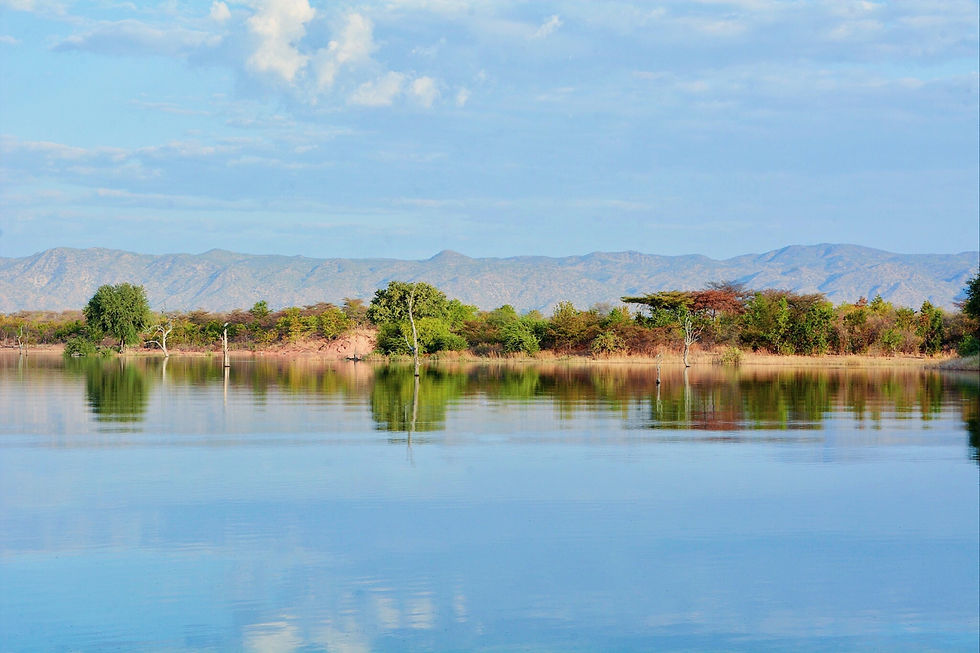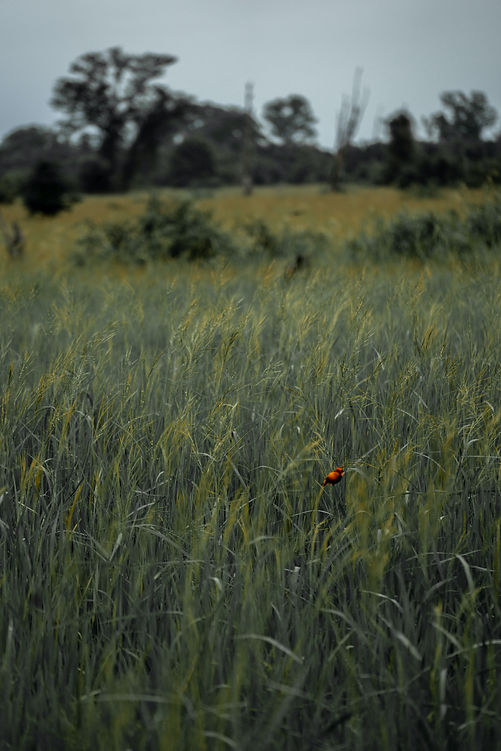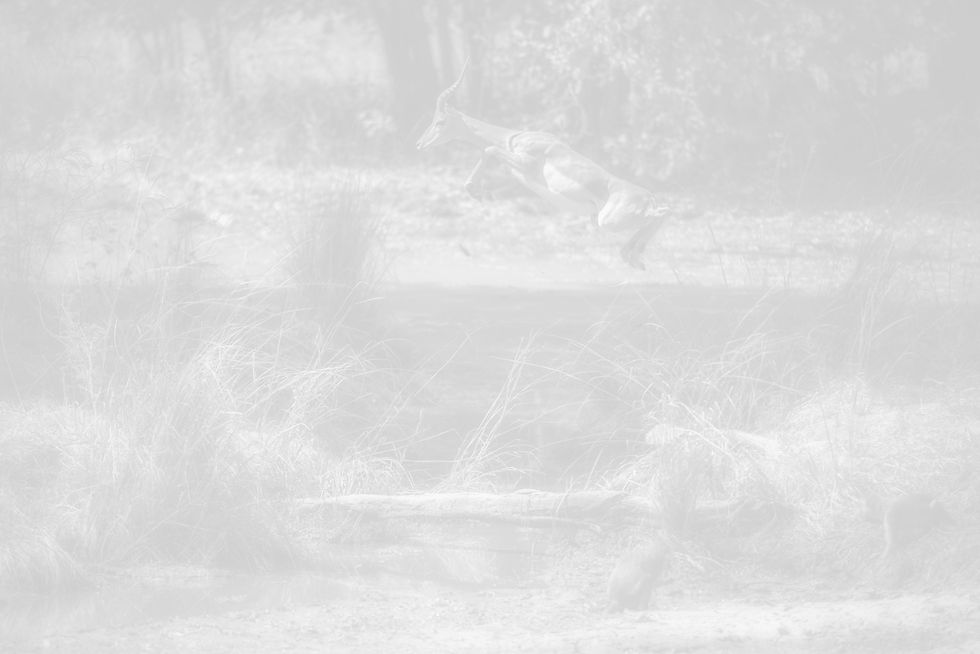
zambia
Voted as one of the safest country on the continent to visit, it boasts some of the most unspoilt and wild landscapes in Africa. This remote wilderness provides the opportunity for game rich safaris without the crowds that so many other destinations have. Zambia hosts fantastic wildlife and holds the highest concentration of Hippo in the world, holding over half of the worlds population.
20
national parks
36 game management areas
10% of all land is protected
Getting There
Kenneth Kaunda International Airport: located 14km from Lusaka, Zambia's major gateway is served by several direct flights but many travellers arrive via Johannesburg. Transfer to charter flights for South Luangwa, Lower Zambezi and Kafue National Parks.
Harry Mwanga Nkumbula International Airport (Livingstone): half an hour’s drive from the falls, visitors to the Zambian side of Victoria Falls arrive via Lusaka or Johannesburg.
The distances between Zambia’s parks are considerable and infrastructure is limited, especially in the rainy season, so the easiest way to get around the country is to fly.
LUSAKA (LUN)
Turkey - Istanbul IST Flight time: 8h 15m
United Arab Emirates - Dubai DXB Flight time: 6h 55m
Ethiopia - Emirates Addis Ababa ADD Flight time: 4h 10m
South Africa - Johannesburg JNB Flight time: 2h 5m
Kenya - Nairobi NBO Flight time: 2h 43m
Tanzania - Dar Es Salaam DAR Flight time: 2h 18m
Namibia - Windhoek WDH Flight time: 2h 20m
Zimbabwe - Harare HRE Flight time: 1h 5m
livingstone (LVI)
South Africa - Johannesburg JNB Flight time: 1h 43m
Kenya - Nairobi NBO Flight time: 3h 15m
South Africa - Cape Town CPT Flight time: 3h 10m
Zambia - Lusaka LUN Flight time: 1h 0m
South Africa - Nelspruit MQP Flight time: 1h 40m
Zimbabwe - Victoria Falls VFA Flight time : 15m

lusaka
livingstone

LIUWA PLAINS
home to
population
17.35 million +
birds
+/- 857 species
Liuwa Plain National Park in Zambia has one of the oldest conservation histories in Africa, dating back to the 19th century where the King of Barotseland, Lubosi Lewanika, appointed his people to be the custodians of the park and its wildlife. They maintain that sentiment today. With an estimated 10,000 people legally living within the park, Liuwa is a prime example of how people and wildlife can co-exist and benefit in a shared landscape.
mammals
237 species+
plants
6,832 species native to Zambia
24 indigenous languages
TIME
Zambia is GMT +2 hour which is known as Central Africa Time (CAT). Zambia does not operate daylight savings.
CURRENCY
The Zambian Kwacha is a decimal type of currency with K1 being made up 100 ngwee. Before Zambia' s independence in 1964, the country then known as Northern Rhodesia used the British pound as legal tender before migrating to the Kwacha in 1965. The Currency Act of 1967 completely replaced the British pound with the Zambian Kwacha banknotes and the ngwee coins.. ATMs are common, and credit and debit cards are widely accepted. Foreign currency can be exchanged at bureaux-de-change, hotels and banks.
WEATHER
The dry season runs from May to October and is when to go to Zambia for the bestgame viewing along with pleasantly mild daytime temperatures (although September and October get extremely hot). The rainy season (December to April) is commonly called the "Green Season" as the bush is beautifully thick and green.
ELECTRICITY
For Zambia there are three associated plug types, types C, D and G. Plug type C is the plug which has two round pins, plug type D has three round pins in a triangular pattern and plug type G is the plug which has three rectangular pins in a triangular pattern. Zambia operates on a 230V supply voltage and 50Hz
TRANSPORT
Public transport options are limited and driving is the most common option throughout the country. There are several car hire companies in Lusaka, Ndola, Kitwe and Livingstone, offering a wide range of vehicles on a flat weekly rate basis or with a daily rate plus mileage, insurance and petrol.
There are many taxis available in major towns. Drivers do not use the meters, so prices have to be bargained in advance. They can be booked on the phone or directly on the road.

WHY ZAMBIA
SOUTH LUANGWA
LIUWA PLAINS
VICTORIA FALLS
LOWER ZAMBEZI
frequently asked
questions
Tipping
Tipping in Zambia is entirely at your discretion but as a guideline we recommend US $10 per person per day for your ranger and tracker and US $25 to be divided amongst the rest of the lodge staff.
When it comes to restaurants, some establishments will add service charge for your bill; if not, 10% is standard.
Best Time to Travel
Victoria Falls (Zambian Side) - March to May (End of Rains) The Falls are at their fullest.
Game Viewing Safari - May to November (Dry Season)
Devils Pool - October to November
Climate
Average summer temperatures: 17°C to 31°C
Average winter temperatures: 9°C to 23°C
Rainy season: November to April
What to Pack
For your Zambia safari, pack lightweight, loose-fitting clothing in natural fabrics such as cotton or linen that will keep you cool, as well as a fleece or jacket for the evenings and early mornings. Zambia is known for its excellent walking safaris so be sure to pack a pair of comfortable walking shoes, as well as a hat or cap to protect you from the sun. And if you are visiting during the rainy season, don’t forget to pack a rain coat – downpours in Zambia are generally short but very heavy.
On game drives, stick to light neutral clothing colours such as khaki, olive and brown but not white as it will quickly get dusty. Avoid black and dark blue as these colours attract tsetse flies.
When travelling in Zambia, bear in mind that the dress code is conservative so women should pack knee-length or longer skirts to wear in the towns.
Flights & Getting Around
Kenneth Kaunda International Airport: located 14km from Lusaka, Zambia's major gateway is served by several direct flights but many travellers arrive via Johannesburg. Transfer to charter flights for South Luangwa, Lower Zambezi and Kafue National Parks.
Harry Mwanga Nkumbula International Airport (Livingstone): half an hour’s drive from the falls, visitors to the Zambian side of Victoria Falls arrive via Lusaka or Johannesburg.
The distances between Zambia’s parks are considerable and infrastructure is limited, especially in the rainy season, so the easiest way to get around the country is to fly. Transfers and game drives are conducted in open-sided 4X4s.
Note that if you’re taking internal flights there is often a luggage restriction of 12kg per person packed in soft bags. Zambia is stricter about this than most countries and even bags with only one hard side might not be allowed.
Visa & Passport Requirements
All visitors to Zambia need to be in possession of a passport valid for at least six months from their date of departure. Citizens of South Africa and Zimbabwe can obtain Zambian visas upon arrival for free; for all other nationalities, tourist visas are available at all major borders, airports.
Generally, Zambia visas are priced in four different brackets, depending on the length of stay: 7-day transit visa; single-entry visa; double-entry visa or multiple-entry visa. Please contact one of our Safari Specialists for up to date information.
Ready to Go on Safari?
Get in touch with one of our Experts to help you tailor-make a safari itinerary:




















